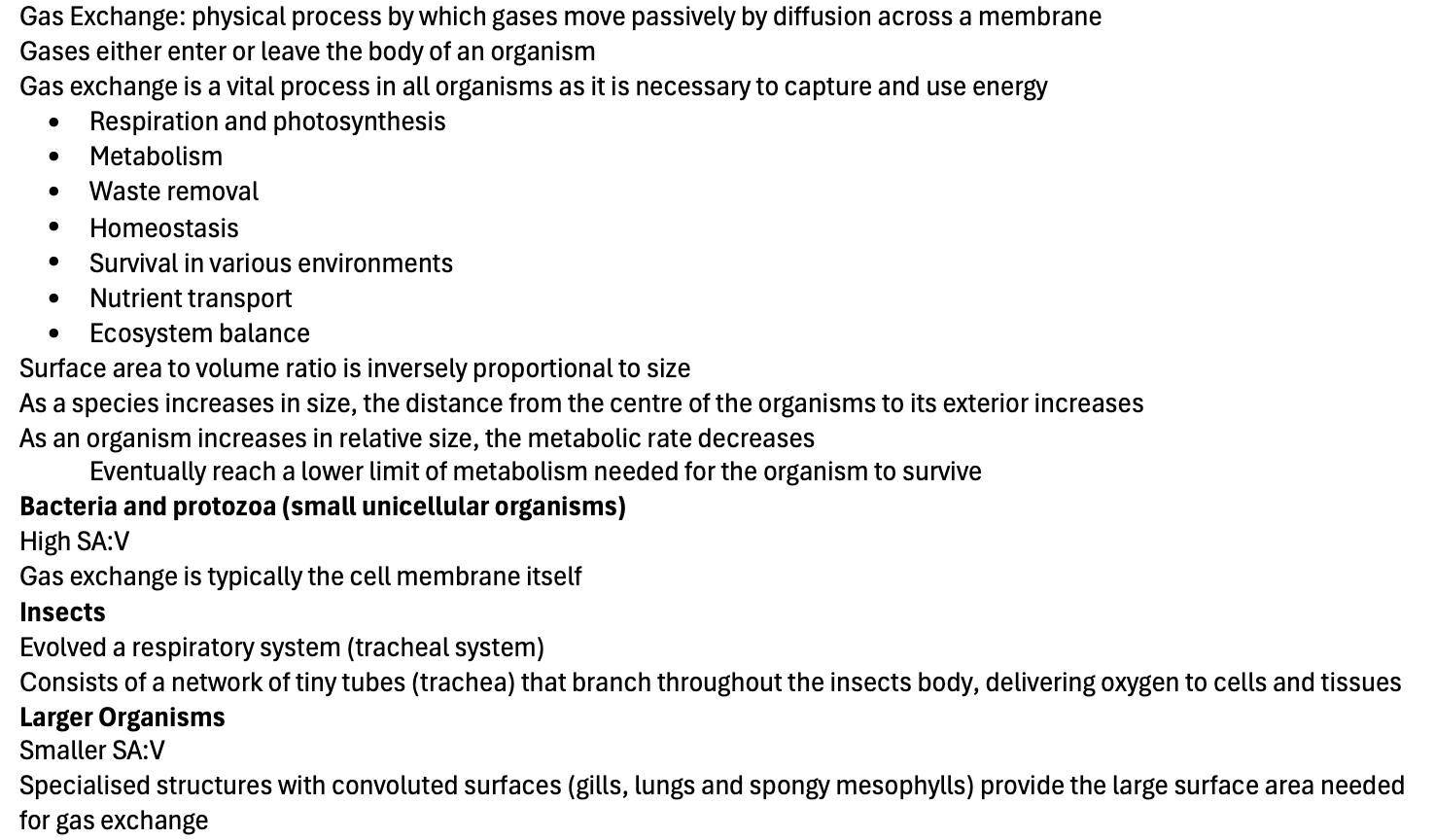Gas Exchange
Gas Exchange: physical process by which gases move passively by diffusion across a membrane
Gases either enter or leave the body of an organism
Gas exchange is a vital process in all organisms as it is necessary to capture and use energy
Respiration and photosynthesis
Metabolism
Waste removal
Homeostasis
Survival in various environments
Nutrient transport
Ecosystem balance
Surface area to volume ratio is inversely proportional to size
As a species increases in size, the distance from the centre of the organisms to its exterior increases
As an organism increases in relative size, the metabolic rate decreases
Eventually reach a lower limit of metabolism needed for the organism to survive
Bacteria and protozoa (small unicellular organisms)
High SA:V
Gas exchange is typically the cell membrane itself
Insects
Evolved a respiratory system (tracheal system)
Consists of a network of tiny tubes (trachea) that branch throughout the insects body, delivering oxygen to cells and tissues
Larger Organisms
Smaller SA:V
Specialised structures with convoluted surfaces (gills, lungs and spongy mesophylls) provide the large surface area needed for gas exchange
Gas exchange surface: simply refers to the surface tissue or membrane at the site of gas exchange in an organism
Gas exchange surfaces have unique features that enable gases to move efficiently:
Permeability - cell membranes or specialised tissues on the GES must be selectively permeable to allow gases to pass through while preventing the loss of essential fluids
Thickness - thin tissues minimise the barrier that gases must cross, ensuring that diffusion occurs quickly and efficiently
Moisture - gases like oxygen and carbon dioxide are more soluble in moist substances than in dry ones (reduces surface tension allowing gasses to move at a higher rate)
Surface area - structures that increase surface area (in cells = folds, projections) (in organs = specialised structures like alveoli or gill filaments) allowing for more gas molecules to be exchanged simultaneously, increasing overall efficiency
Average adult human lung contains between 300-500 million alveoli

